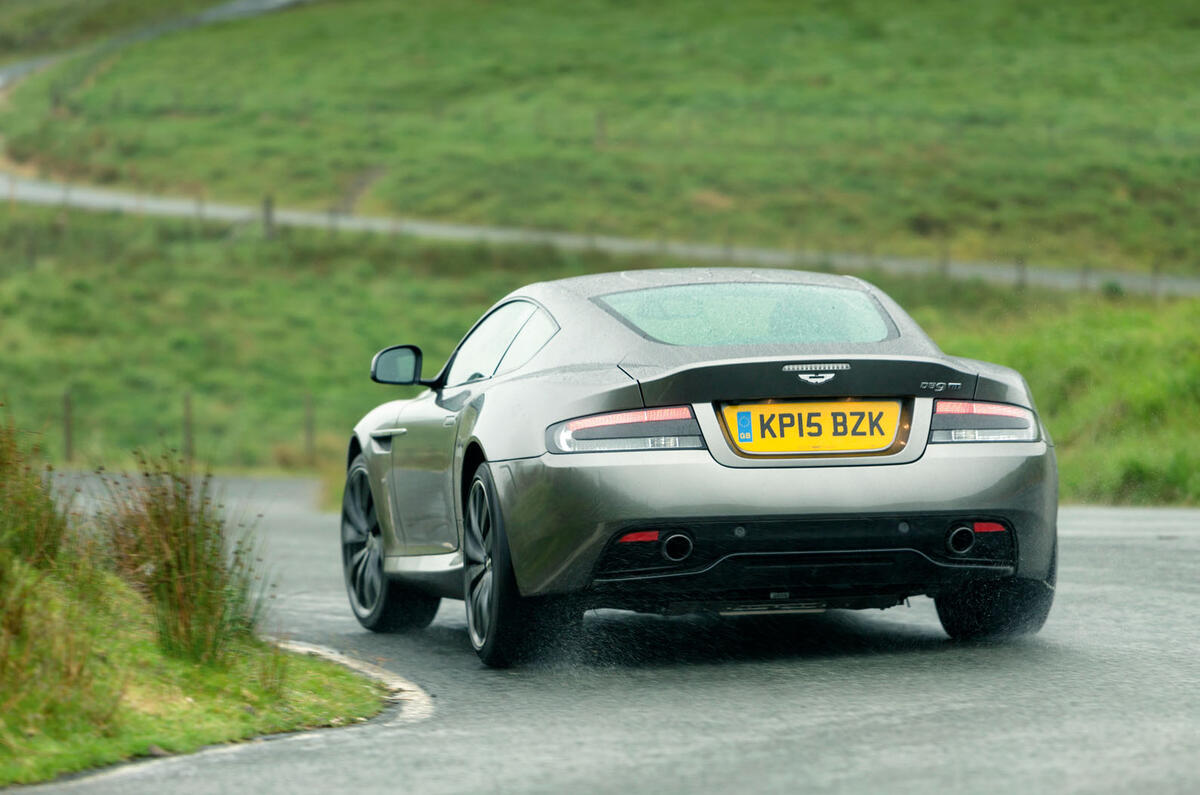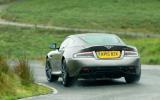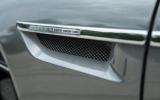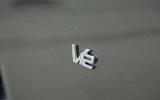There is no convoluted plan. Normally for a ‘goodbye’ drive of a car, we’d go somewhere regarded as marginally relevant.
Start at the Aston Martin monument near Aston Clinton, or go to that road in the film Skyfall, or something convoluted or tenuous like that. I can’t be doing with that ‘take it to this bit, pose for a poignant picture’ malarkey.
Geneva Motorshow update: Aston Martin reveals the tech spec and pricing for the forthcoming DB11
The Aston Martin DB9 is a car I’ve just always liked driving. And so to mark the fact that it’ll disappear from production next year, and that this model – the DB9 GT – is meant to be “the best a DB9 can be”, I’m just going to take it for a drive. Get up early, travel well, enjoy the sunset, come home. Simples.
The GT is the end of a 12-year journey for the DB9, the ultimate version in the only proper sense of the word. The DB9 itself could hardly be more significant to Aston. It’s the first of the VH architecture cars, the aluminium underpinnings whose metaphorically flexible ‘vertical’ and ‘horizontal’ components mean Aston can make a car as long as it likes and fit whatever components it likes.
It’s so versatile that Aston used to get a bit uppity if you called it a ‘platform’, because that suggests the platform is now 12 years old. Yet pull the skin off a DB9 now and from a 2004 model and they’d look different enough underneath.
The advantages of the structure are many. It is versatile, for one thing. The DB9, Aston Martin Vantage, Aston Martin Vanquish and Aston Martin Rapide, as well as the shorter-lived Virage and DBS, have all been hung from versions of this same architecture.
And it makes for easy car upgrades. That’s important for a company with the limited budget of Aston’s. (“Aston has basically never made money,” says CEO Andy Palmer.) Over the years, the infotainment system has been improved, the interior has received makeovers, the engines have been made cleaner and more powerful and structurally it’s more rigid and better honed.
But with that comes a downside: the Aston range has been a group of cars that, if you’re a less interested observer, look similar and do a similar thing. In future, under the stewardship of Palmer, that’ll be different, we’re told. VH architecture will stay, but each model line will have its own distinct personality – up to and including the crossover that’s meant to provide Aston with the budget to be self-sustainable in the long term. First on the list, though, is the DB11, this car’s replacement.
I’d be pretty chuffed if the DB11’s demeanour and personality turned out not too dissimilar to the DB9’s. It’s not uncommon to find that the original version of something is the purest and best.
The DB9 was the first VH car, it’s a GT car and, to my eyes, it’s still Aston at its best. I don’t like talking about aesthetics too much because I’m not a designer, you can make up your own mind and I’d rather deal in more objective things, but I’ll make an exception here: I think the DB9 is still a staggeringly good-looking car.
Today, the GT wears a black front splitter and rear diffuser, because apparently no pseudo-sporting car of any ilk is allowed out of the factory gates without them these days. But when it rocks up outside my house at yawn o’clock, I still stop and just look at it for a while.
Although I don’t have a tenuously linked plan, photographer Luc Lacey and I do have a plan of sorts. To see what the DB9 is like now and see how good the DB11 will have to be, we’ll drive to Wales, mooch around on some good, quiet roads, and take it to a beach for a sundown photo, if there’s a visible sunset. But this being the summer holidays in Great Britain, the day starts pretty grey and doesn’t get much brighter.
Hey ho. That won’t stop us from assessing part one of the DB9’s job: grand touring – if Oxfordshire to the Elan Valley is particularly grand.
Obviously, it isn’t, because it’s wet and there are roadworks and families in MPVs but, still, it’s several hours non-stop behind the wheel and whether you do that on the M42 past Redditch or on the A8 from Genoa to Saint-Tropez, the net effect is the same: you discover that the DB9 is pretty good at this sort of thing.
When it was launched, the DB9 had plastic switches to move the seats and the Volvo-sourced satellite navigation system was rubbish even then, but although the overall cabin architecture is similar, here’s where you can see how Aston improves things in small increments.
The latest-generation centre console has a touch-sensitive array of haptic feedback switches, the seat controls became nice aluminium items years ago and these days, if you reach that far, the nav screen is touch-sensitive and pretty easy to use.
That’s where you notice the budget differences with small car makers these days. Hand-crafting used to give them an edge on mainstream cars, but short lifecycles mean ordinary cars kill them for technology. Still, the DB9 GT feels lovingly put together inside. Certainly, fit and finish are a class apart from where they used to be.
But it’s the way the DB9 drives that has always marked it out to me as a bit special, and the GT is no different. I like the controlled, composed way it rides. (A couple of my colleagues think it can be a bit firm for a grand tourer, but I don’t mind it.)
What you get is a lot of honesty. The big 5935cc V12 – pushed up to 540bhp in the GT, rather than the standard car’s 510bhp – has precisely the kind of response you’d expect from a large, naturally aspirated engine: predictable, reliable, zingier at the top end (peak power is at 6750rpm) but pleasingly lag-free lower down.
And even though the automatic gearbox is a six rather than the latest eight-speeder, such is the spread of power and its smoothness that you don’t miss having more.
Then there’s the chassis balance. Away from the humdrum commuting roads and into the quietest bits of Wales, the more interesting side to the GT’s personality comes out.
Sure, the engine’s in the front – and it’s quite big – and the kerb weight is 1785kg, so the Aston isn’t super-agile, but the DB9 just feels ‘right’. It steers with great confidence – something else massively improved over the years is clearing the steering of harsh kickback – and the handling is just so trustworthy, predictable and downright enjoyable.
A Ferrari F12 can feel hyperactive; a fast Porsche 911 can feel cold; that Bentley Continental always feels its size. Of all GT cars, though, to my mind the Aston has the most pleasing handling balance. If you had to write a book on how a big coupé should handle, you’d use a DB9 as the template.
More good roads follow, and a few bad roads, too, until we reach the coast where guess what? It’s still grey. There’s no visible sunset today, but that’s fine by me. There are lots of aspects to the DB9 that I’d rather the sun didn’t go down on at all.
Aston Martin DB9 GT
Price £140,000; Engine V12, 5935cc, petrol; Power 540bhp at 6750rpm; Torque 457lb ft at 5500rpm; Gearbox 6-spd automatic; Kerb weight 1785kg; Top speed 183mph; 0-62mph 4.5sec; Economy 19.8mpg; CO2/tax band 333g/km/37%
We road tested the original DB9 in 2004. This is what we found...
“In short, there isn’t a better drivetrain on sale,” we said of the DB9 when we first road tested it, on 1 June 2004. We rather liked the rest of the car, too, because it notched up four and a half stars.
There was a lot to like about it then, as now. Back then, its 5935cc V12 put out 450bhp at 6000rpm and 420lb ft at 5000rpm, which was enough to punt it to 60mph in 5.4sec and through a standing quarter mile in 13.7sec.
At the time, we reckoned there was “not much that will out-drag a DB9 in a straight line”, which is quite a telling fact about the past 10 years in motordom, because even some hot hatchbacks would out-drag a decade-old DB9 today.
Reading the test now, though, there is a pleasing sense of continuity about the DB9. “By conventional Aston standards the DB9 is very firmly sprung,” we wrote, but “it remains a fine blend of comfort and agility”.
Its handling balance was similarly faithful: a touch of understeer that you could prod through in the wet, but with grip levels so high that “in the dry, only the insane will try and find where it finally ends”. It felt agile for its size but wasn’t a car you could thread as easily as a Porsche 911.
Ultimately, “dealing with the bad [was] a gratifyingly short process”. The steering was too heavy, the ride a bit choppy and a few switches “unbecoming of a £103k car”. We concluded it was “extraordinarily desirable and supremely capable” and “the best car Aston Martin has ever made and a tantalising preview of what’s to come from Gaydon”. Since then, the DB9 has served Aston supremely well.
Get the latest car news, reviews and galleries from Autocar direct to your inbox every week. Enter your email address below:














































Join the debate
Add your comment
It has been around for a
Beautiful.